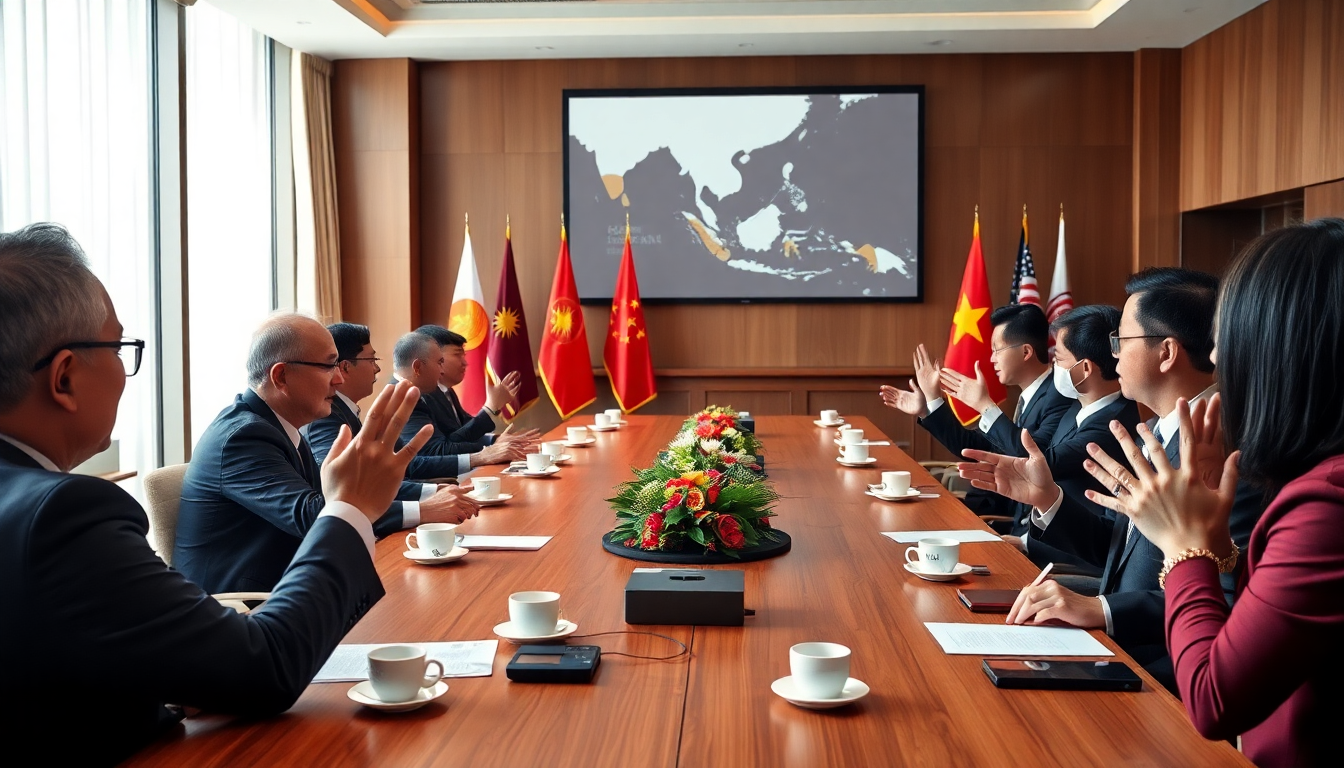Table of Contents
In a world where superpowers are constantly jostling for position, the role of regional organizations like ASEAN is more crucial than ever. With rising tensions in the South China Sea and other hotspots, the call for peace and security is echoing louder than before. Recently, Malaysia’s foreign minister emphasized the need for wisdom and prudence as we navigate these choppy waters, highlighting the delicate balance ASEAN must strike to maintain stability in Southeast Asia.
Navigating the Geopolitical Landscape of Southeast Asia
The geopolitical dynamics in Southeast Asia are significantly influenced by the interactions between the United States and China. As these two giants vie for influence, the region finds itself in a tricky spot, where even a small misstep could lead to serious consequences. The South China Sea, abundant in resources and critical trade routes, has turned into a battleground of interests, with various nations asserting their claims.
ASEAN, made up of ten Southeast Asian countries, plays a pivotal role in fostering dialogue and cooperation among its members. The organization’s ability to maintain peace and stability in the region is essential, especially as it strives for collective security and economic growth. The recent comments from Malaysia’s foreign minister underline the pressing need for a unified approach to effectively manage the situation. ASEAN’s dedication to diplomacy and collaboration is key to preventing conflicts and ensuring that all parties can coexist peacefully.
ASEAN’s Roadmap for Peace and Cooperation
ASEAN’s strategy centers around promoting a culture of dialogue and understanding among its member states and external partners. The call for all parties to tackle the South China Sea situation with wisdom and prudence embodies ASEAN’s diplomatic approach. By prioritizing conversation over confrontation, ASEAN seeks to ease tensions and foster a stable environment where regional prosperity can flourish.
The organization has launched various diplomatic initiatives and multilateral forums to address security concerns, stressing the importance of international law and peaceful dispute resolution. These efforts aim to cultivate an atmosphere of mutual respect and collaboration—an essential ingredient for long-term stability in the region.
What This Means for Regional Security and Stability
The implications of ASEAN’s push for peace reach far beyond the immediate geopolitical landscape. A stable Southeast Asia is not just vital for the countries within the region; it also holds great significance for global powers. The economic ties among these nations, along with their strategic location, make regional stability a priority for international stakeholders.
Moreover, as ASEAN tackles these challenges, it can serve as a model for other regions facing similar dilemmas. By prioritizing diplomacy and collective security, ASEAN proves that cooperation is possible, even amidst intense rivalries.
Looking Ahead: ASEAN’s Vision for the Future
As we gaze into the future, ASEAN’s prospects will largely hinge on its ability to adapt to the ever-changing geopolitical landscape. The organization’s commitment to peace and stability must remain unwavering, even as external pressures intensify. The call for wisdom and prudence is not merely a response to current tensions; it’s a vision for a future where all nations can coexist and thrive.
In conclusion, the emphasis on peace and security in the region goes beyond mere diplomacy; it’s a fundamental necessity for the ongoing prosperity of Southeast Asia. By cultivating a culture of dialogue and cooperation, ASEAN can skillfully navigate the complexities of international relations and continue to shine as a beacon of stability in an unpredictable world.


